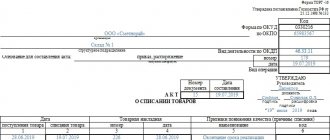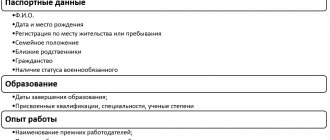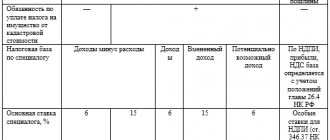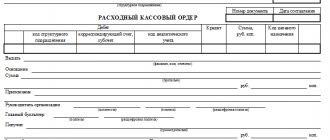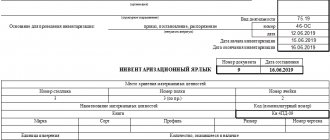Do I need to register it for self-export?
In a situation where the buyer independently organizes the removal of products from the seller’s warehouse, there will be two options regarding the need to draw up a consignment note.
- If you use the services of a transport company to move products, drawing up an invoice is mandatory. It will serve as a reporting document to confirm the provision of transport services by the carrier.
- If transportation is carried out by the buyer himself, an invoice is not issued, since no contract for transportation is concluded.
Read more about when and why you need to draw up a TTN here.
You can familiarize yourself with the consignment note in more detail on our website. Read the following materials:
- Features of working with waybills in EGAIS.
- TTN, delivery note and invoice: comparison of documents.
- What is a TTN number and is it a mandatory requirement?
Who signs and seals?
Clause 9 of the Rules for the Transportation of Goods by Road states that the consignment note must be signed by the consignor, consignee and carrier and certified by their official seals. When transporting the goods independently, the buyer signs and seals for the sender and the recipient. Accordingly, the transport company employee also affixes a stamp and signs.
In the case where the consignor, consignee or carrier is not an organization, but a private entrepreneur, no stamps are placed when filling out the consignment note, only signatures.
If companies are parties to the agreement, in addition to their signatures, their official seals must be present in the relevant paragraphs.
Who issues the consignment note?
The forms and rules for filling out the consignment note are determined by Decree of the Government of the Russian Federation dated April 15, 2011 No. 272 “On approval of the Rules for the transportation of goods by road.” Paragraph 6 of these rules states that the consignment note is issued by the shipper.
- If a transport company is hired to move goods, the shipper is the buyer, who must issue a waybill. In this case, the buyer himself will also be the consignee. In such conditions, from the moment the products are shipped from the warehouse, the seller no longer bears any responsibility and is not obliged to draw up and issue a TTN.
- If the buyer carries out transportation using his own transport, then he may not issue a waybill. Then the products are registered in accordance with TORG-12, and transportation costs are confirmed by waybills and documents for the purchase of goods.
Search for freight transport and special equipment near you!
For clients who require the services of special equipment or cargo transportation, the cost of the order always includes the dispatcher’s percentage for searching for equipment and payment for time to supply the equipment.
The problem is that one owner has equipment, but at the moment it is all occupied at the site, the other has simply broken down. The dispatcher needs to constantly keep in touch with many equipment owners in order to quickly respond to customer requests.
We recommend reading: Where to complain about Rosreestr employees
But how can you find available equipment without the services of a dispatcher and not pay for delivery time? The dispatch service "Transportation 24" has brought together all the owners of special equipment on one website and allows customers to independently find equipment in the desired city. At the same time, by contacting the owner of the equipment directly without a dispatcher, you can count on reducing the cost of services by up to 10%.
Any proposals to reduce the price must be justified.
If with a large order you can still count on a discount, then with a small volume it is difficult to reduce the cost of services.
But there is one option! The “Transportation 24” website records the geolocation of all parking lots for special equipment and trucks. It turns out that if the equipment is located close to the work being carried out, then you can further save on the cost of its delivery. After all, it is also beneficial for the owner of the equipment to do the work nearby rather than waste time on the road with traffic jams.
Therefore, independently searching for the nearest special equipment will allow you to reduce the cost of services and reduce the time it takes to arrive at the work site. Statistics in numbers: 72,399 transport companies and private owners of special equipment have already been registered.
Features of filling out form 1-T
The waybill consists of two parts:
- product section, where all product data is indicated;
- transport section, where information about the carrier is entered.
In a situation where the goods are picked up from the supplier by pick-up, the product section is filled in by the buyer . In the form, he must fill in the appropriate data columns for both the shipper and the consignee (points 1-7, 16, 17).
The document is drawn up in two copies and handed over to the carrier for him to fill it out, and after that one of the copies is returned to the buyer.
All copies of the TTN must be originals and not copies.
It is important to note that in reality the shipper may have some problems when filling out paragraphs 3 “Name of cargo”, 4 “Accompanying documents for cargo” and 6 “Reception of cargo”. Since to fill them out you need to know in advance:
- place;
- date and time;
- condition of the cargo;
- product labeling number at the time of loading;
- number of cargo spaces;
- series and numbers of quality certificates, etc.
This information can be obtained directly from the supplier, or if you are present at the time the goods are shipped from the warehouse.
In such cases, two options are possible.
- The buyer personally or an employee of the recipient company accepts the products from the seller using the TORG-12 consignment note and then transfers it to the carrier’s representative using the TTN, independently entering information into paragraphs 3, 4 and 6.
- You can also write out a power of attorney for an employee of a transport company (most often the driver) to accept the cargo, according to which he can fill out the relevant items.
We wrote about how to fill out the TTN using Form 1-T in this article.
On our website you can familiarize yourself with other types of TTN:
- CMR consignment note.
- TTN for dairy products, animals and other types of documents.
- TTN for grain according to the SP-31 form.
New accounting
A magazine for practicing accountants, financial professionals, auditors and tax consultants. The magazine consists of four main sections: accounting, taxes, labor and wages, and law.
Publication frequency: 1 time per month. Volume: 144 strips.
The parties supplying goods under the concluded agreement - supplier A and buyer B - do not have their own warehouses. The goods are moved by a third-party transport organization from the warehouse of company D to the warehouse of company D (companies G and D have appropriate licenses (for the operation of explosive and fire hazardous facilities, for loading and unloading activities).
1. When preparing the consignment note form TORG-12, which companies should be indicated in the columns “Consignor” and “Consignee”?
2. In the columns “Consignor” and “Consignee”, indicate the legal addresses of companies or postal addresses of their warehouses?
3. If the supplier is not the consignor and the buyer is not the consignee, will it be sufficient to indicate in the supply contract company G as the “Consignor” (with all company data), and company D as the “Consignee”?
4. Is it necessary in our case to issue a new sample transport bill of lading (Appendix No. 4)?
Thank you in advance for answering my question.
The question relates to the city: Tolyatti
- The phrase that the buyer and supplier do not have warehouses is not very clear, excuse me, on what basis do companies G and D stock their goods? Accordingly, the supplier and buyer have rental or storage agreements with the warehouse owners, which means. Formally, the parties to the supply agreement one way or another HAVE warehouses (rented or otherwise, it doesn’t matter). If so, then Torg-12 is filled in according to the actual shipping address and acceptance address of the goods. Warehouse owners have nothing to do with it
Please answer the question SPECIFIC questions (1,2,3.):
1. who should be entered as the shipper: supplier A or warehouse owner D?
2. Who should be entered into TORG-12 as the “Consignee”: buyer B or warehouse owner D?
Supplier A executed TORG-12 and indicated the owners of warehouses G and D as the shipper, arguing that they had the appropriate licenses, and the seller and buyer did not have such licenses.
Supplier A also referred to clause 1 of Article 509 of the Civil Code of the Russian Federation (delivery of goods is carried out to the address of the buyer or OTHER PERSON specified in the supply agreement).
In addition, the product - methanol - is a poison and a precursor; the warehouse must also have a license to work with this product.
Companies D and D have a license for methanol circulation, companies A and B do not.
The accounting department of the purchasing company refuses to sign TORG-12 issued by the supplier.
The main question that you did not answer: if we specify specific warehouses in the supply agreement as the consignor and consignee, can we indicate them in TORG-12 as such?
1. who should be entered as the shipper: supplier A or warehouse owner D?
2. Who should be included in TORG-12 as a “Consignee”: buyer B or warehouse owner D?
Supplier A executed TORG-12 and indicated the owners of warehouses G and D as the shipper, arguing that they had the appropriate licenses, and the seller and buyer did not have such licenses.
Supplier A also referred to clause 1 of Article 509 of the Civil Code of the Russian Federation (delivery of goods is carried out to the address of the buyer or OTHER PERSON specified in the supply agreement).
In addition, the product - methanol - is a poison and a precursor; the warehouse must also have a license to work with this product.
Companies D and D have a license for methanol circulation, companies A and B do not.
The accounting department of the purchasing company refuses to sign TORG-12 issued by the supplier.
The main question that you did not answer: if we specify specific warehouses in the supply agreement as the consignor and consignee, can we indicate them in TORG-12 as such?
I will support my colleague. Either the buyer or the supplier, or both, must have a contractual relationship with companies G and D. Moreover, both for transportation and storage of cargo (or for renting a warehouse). And if both G and D act as agents or act on behalf of A and (or) B, then there must be corresponding agreements and powers of attorney.
It is also not clear from your question which of the parties to the contract - the supplier or the buyer - engages the carrier. and it depends on who should draw up the documents.
If the goods are released from the supplier’s warehouse on the terms of self-pickup of the goods by the buyer’s transport, then the seller is obliged to issue the buyer only a consignment note of form N TORG-12 and issue an invoice or, instead of the two specified documents, issue a UPD.
If the buyer engages a carrier to deliver the goods, he will independently issue a bill of lading. In paragraph 1 of Art. 8 of the Road Transport Charter states that the consignment note, unless otherwise provided by the contract for the carriage of goods, is drawn up by the shipper; a similar rule is duplicated in clause 6 of the Rules, approved. Decree of the Government of the Russian Federation of April 15, 2011 N 272.
The shipper is an individual or legal entity who, under a contract for the carriage of goods, acts on his own behalf or on behalf of the owner of the goods and is indicated in the waybill, as stated in clause 4 of Art. 2 of the Charter. In other words, the shipper can be both the supplier of goods and their buyer, persons authorized by the seller and buyer, as well as a freight forwarder.
In the Letter of the Federal Tax Service of Russia for Moscow dated August 11, 2011 N 16-15 / [email protected] it is explained that when goods are self-pickup through a specialized carrier, when ownership of the goods passes to the buyer at the supplier’s warehouse, the shipper is the buyer, who and must issue a waybill.
In the event that the goods are delivered by the supplier to the buyer’s warehouse, the supplier also draws up a delivery note in form N TORG-12 for the goods being released and issues an invoice or, instead of the two specified documents, issues a UPD. If the goods are delivered by the supplier’s own transport, and the delivery cost is included in the price of the goods, the supplier does not issue a delivery note. If in the contract for the sale of goods the cost of transportation is highlighted separately, then the seller, acting as the shipper, even in the conditions of his own transport, is obliged to issue a consignment note.
